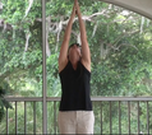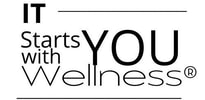2.1 (I) Movement with Breath
Movement with Breath:
I know we all hear this stated a lot, “just breathe”, but using the correct method can enhance your calm, and in a shorter period of time. This is my favorite method to use when I am feeling the need to calm my body down quickly.
I know we all hear this stated a lot, “just breathe”, but using the correct method can enhance your calm, and in a shorter period of time. This is my favorite method to use when I am feeling the need to calm my body down quickly.

Stand with your feet about hip width apart with your eyes closed, to internalize and block out potential distractions. (Unless you have a need to keep your eyes open.)
Take a nice, long deep breath in to a count of about 4 or 5, as you inhale your arms up over your head, reaching for the ceiling. You want to expand your lungs as much as you can here. The more oxygen into your body, the more you can release.
Take a nice, long deep breath in to a count of about 4 or 5, as you inhale your arms up over your head, reaching for the ceiling. You want to expand your lungs as much as you can here. The more oxygen into your body, the more you can release.

Place your palms together and SLOWLY exhale your arms down to heart center to a count of about 7 or 8. The slower the better, for whenever you exhale longer than the inhale, you kick in the parasympathetic nervous system that is responsible for relaxing the body.
Repeat this move about five times, very slowly, and notice with every exhale how your body becomes more and more relaxed. Relax your shoulders, and feel the body as it starts to let go.
There are many different ways you can “breathe”, and this is just one of them. I find this method to be most helpful for me, as for many of my students. As I mentioned earlier, the best time to practice this move is when you are NOT in a stressed out state. Why? So your body can get used to how you are SUPPOSED to feel, and really tap into how you can relax yourself. This way, when you ARE tense and anxious, the body will recognize the feeling you are trying to accomplish. The more you practice this in a relaxed state, the easier the brain will understand the feeling you are looking for to achieve when you ARE stressed.
Repeat this move about five times, very slowly, and notice with every exhale how your body becomes more and more relaxed. Relax your shoulders, and feel the body as it starts to let go.
There are many different ways you can “breathe”, and this is just one of them. I find this method to be most helpful for me, as for many of my students. As I mentioned earlier, the best time to practice this move is when you are NOT in a stressed out state. Why? So your body can get used to how you are SUPPOSED to feel, and really tap into how you can relax yourself. This way, when you ARE tense and anxious, the body will recognize the feeling you are trying to accomplish. The more you practice this in a relaxed state, the easier the brain will understand the feeling you are looking for to achieve when you ARE stressed.
